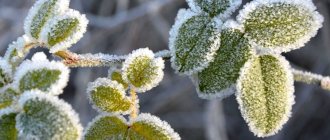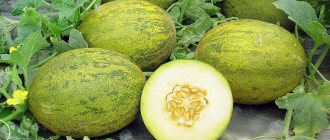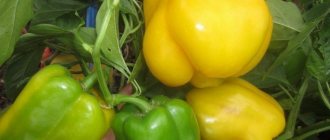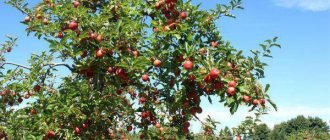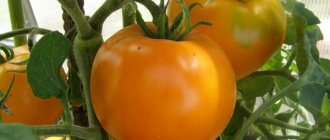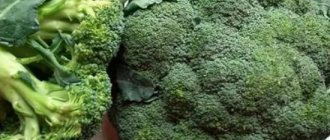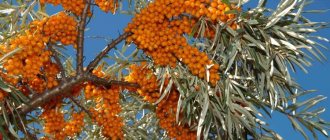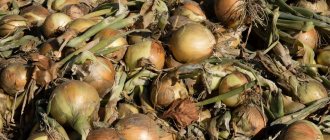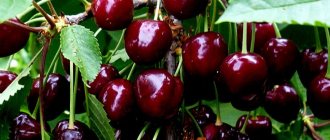Donetsk white
Review
The Donetsk white variety is unpretentious, but the fruits are not very tasty and are easily wrinkled. Winter hardiness is not high. In our opinion, it is not suitable as the only peach in the garden, but it can be planted for company.
Description
The Donetsk white variety can be formed as a tree or bush. Medium ripening period. Vigorous, fast growing. The crown is dense and rounded. The winter hardiness of the tree and flower buds is good. In frosts below -30°, trees freeze to the level of snow, but can recover. The fruits are medium-sized, weighing 70-90 g (with a small harvest they can reach 120-140 g), round or round-oval in shape, with a shallow ventral seam. Pubescence is weak. The color of the fruit is white with a dark red blush. The pulp is white, tender, juicy, sweet with sourness. Tasting score 4.2-4.4 points. The stone is of medium size and does not separate from the pulp. The fruits ripen in mid-August. The transportability of the fruits is low and they wrinkle easily. Donetsk white is one of the most unpretentious varieties.
History of selection of the Donetsk yellow variety
The Donetsk Yellow variety was developed in 1960 by Honored Agronomist Liliya Ivanovna Taranenko from the Donetsk Horticulture Research Station, later Artyomovskaya, now the Bakhmut Nursery Research Station of the Institute of Horticulture of the Ukrainian Academy of Agrarian Sciences (Bakhmut Seedling Nursery).
She received seeds for breeding from the city of Gelendzhik (Krasnodar Territory, Russia). This variety has been propagated at the station for a long time; its seedlings are actively planted in areas of the Donetsk and Lugansk regions (Ukraine), and the Rostov region (Russia).
Donetsk yellow
Review
Large, very tasty peaches. A big plus is the self-fertility of the variety; it can grow in the garden alone, without pollinators (although with a pollinator, of course, it is better, the yield increases)
Description
The Donetsk yellow variety can be formed as a tree or bush. This is a medium-late ripening variety. Vigorous. The crown is dense and rounded. The winter hardiness of the Donetsk yellow variety is good. In frosts below -30°, trees freeze to the level of snow, but can recover. Early fruiting is average, they begin to bear fruit in the third year. The variety Donetsk yellow is self-fertile! The fruits are large, weighing 130-150 g (some reach 200-220 g), round or broadly oval in shape. Pubescence is weak. Color - pale yellow, with a red blush, purple. The pulp is dense, juicy, very sweet with slight sourness, aromatic. Tasting score 4.7-4.9 points. The stone is large and cannot be separated from the pulp. The Donetsk yellow variety ripens at the end of August. Transportability is good.
Description
The fruits of all varieties of peaches are valued for their juiciness, amazing taste and aroma; they are consumed not only fresh, but also made into delicious jams, jams, jellies, candied fruits, and added to cakes and pastries. And a lot can be said about the benefits of peach - it helps improve the functioning of the cardiovascular system, normalize liver function, promotes the formation of hemoglobin, has cleansing properties, is widely used in dietary nutrition and as a general tonic. All these qualities are inherent in such a wonderful variety of peach, like Donetsk yellow. This is a high-yielding variety that appeared in the Donetsk representative office of the Institute of Horticulture. It was bred through the efforts of breeder L.I. Taranenko in 1960. The specialist managed to create a new high-quality peach variety from the seeds that were brought from the city of Gelendzhik. For a long period of time, the variety was propagated by specialists from the Donetsk nursery, and a little later it became popular not only in the Donbass and other regions of Ukraine, but also in Russia.
The fruit tree of the Donetsk yellow type is a tall crop with a fairly dense round crown. The leaves are also large in size and have a beautiful dark green hue, and annual shoots, on the contrary, are light green, but you can see an interesting carmine tan on them. Peach flowers are also very large and have a pleasant pink tint. Donetsk yellow is a self-fertile variety, its fruits weigh up to approximately 150 g, some can reach 220 g.
The fruits are characterized by a round shape, sometimes they have the shape of a wide oval, somewhat flattened on both sides, and a specific ventral suture is also visually visible on the surface. The fruits have a pale yellow peel with an exquisite blurred blush on the surface. Unripe peaches have a greenish-yellow skin color, the same as the flesh of the fruit. It is dense in consistency and has a yellow-orange color right next to the peel. The taste of Donetsk yellow can be called quite sweet, with a pleasant acidity. The seed of the fruit is large and it is almost impossible to separate it from the pulp. When tasting by experts, this peach variety received a good rating of 4.9 points.
In terms of the duration of the growing season, this variety of fruit tree is very close to the Kyiv early, but its need for heat at this time is greater. Just like the control variety Kyiv Ranny, Donetsk Yellow begins to bear fruit no earlier than in the third year after planting, and the maximum amount of harvest can be expected in the fourth year. The early fruiting rate is average; in years favorable for the wintering of flower buds, the amount of harvest collected from each fruit tree can be about 50–60 kg.
Kyiv early
Review
The main advantages of the variety are attractive: winter hardiness, beautiful fruits of very good taste, self-fertility. In the conditions of Volgograd there is no need to chase exotic things; here it just grew and gave birth. Kiev early grows and bears fruit here.
Description
The Kyiv early variety can be formed as a tree or bush. Kyiv early - varieties of early ripening. Medium and vigorous (up to 3-4 m) The crown is dense, rounded. Kiev early is one of the most winter-hardy peach varieties. When frozen in severe winters, it recovers well. After a good overwintering (if the temperature did not drop below -26°), the yield is high - 30-60 kg per tree. Blooms in mid-April – May. The fruits are medium-sized, weighing 70-80 g (with a small yield up to 110 g), round in shape, with a well-defined ventral seam. The color is creamy white with a striped red blush over the entire surface of the fruit. Pubescence is average. The pulp is juicy, sweet with a slight sourness, aromatic, very good taste. Tasting score - 4.4-4.6 points. The stone is of medium size and does not separate from the pulp. The fruits ripen in mid-July. Kiev early is a self-fertile variety, but for a bountiful harvest it still needs pollinators. Its pollinators: May Flower, Redhaven, Greensboro, Moretini's Favorite, Velvety. Resistant to powdery mildew and klyasterosporiosis. The tree of the Kyiv early variety lives longer than its relatives. Drought resistance is low.
Tips for caring for crops
Donetsk yellow peach cannot be called unpretentious. It requires regular care, and it also needs to be prepared for wintering.
Watering mode
When watering, they are guided by the age of the peach, as well as the degree of drying of the soil. For a month after planting, water the seedlings every 3 days, the volume is 1 bucket of water. In dry weather, do this more often - once every 2 days, you can empty 2 buckets. Already mature peaches need 5 buckets, but if there was a lot of rain in winter and spring, then they do not do this right away. If it’s not enough – from May. You need to water no more than 2 times every 30 days.
The last watering is a month before harvesting. The plant also requires water before wintering. Then they pour up to 10 liters per 1 square meter.
Feeding and fertilizers
Once every 2-3 years, the peach is fertilized with compost or humus. As for seasonal fertilizing, the peach is fertilized for the first time in the spring. For this purpose, diluted urea is used (before the buds open) or urea and ammonium nitrate (after the buds open).
See also
Description of varieties of columnar peaches, their planting and care, rules of agricultural technologyRead
In the summer, when the fruits are forming and ripening, you can use a mixture of urea, aqueous extract of superphosphate, potassium sulfide, ammonium sulfate and borax. They are diluted in 10 liters of water. Preparing for winter also requires feeding. Per 1 square meter, add 40 grams of superphosphate and 50 grams of potassium chloride.
Trimming Features
There are two types of crop pruning:
- For removing old, diseased or frostbitten branches.
- Formative - after the buds have appeared, pruning is carried out to form a cup-shaped crown. Needed in the first 4 years.
Specifics of wintering
After watering, digging and fertilizing, the soil is mulched with peat or humus; their layer should be 10-15 centimeters. Peaches are also insulated with a frame made of cardboard or other material (bag, spruce branches), it is secured on special pegs. If the winter is warm, it is enough to add earth so that it covers the trunk by half a meter.
Novoselkovsky
Review
It is in Volgograd that this variety gains good taste. High winter hardiness is also an undeniable plus. Moreover, the small size of the tree (bush) allows it to be tied up and well covered for the winter. This means you won’t be left without a harvest. But the peach fruit, which is the size of a large apricot, is not attractive to many.
Description
Novoselkovsky is a medium-early ripening variety. Undersized. Winter hardiness is high, higher than that of Kyiv early. Recovers well from frostbite after harsh winters. Frosts below -28° kill flower buds completely. The fruits are medium-sized and small, weighing 50-60 g (with a small yield up to 70-80 g), round or round-oval in shape with a well-defined ventral seam. The color is creamy white with a greenish tint and a striped, soft blush. Pubescence is average. The pulp is tender or medium density, moderately sweet with acid. The stone is medium in size and does not separate from the pulp. Ripens at the end of July. It begins to bear fruit 4-5 years after planting. Productivity is good after successful overwintering of flower buds. The fruits are suitable for fresh consumption, drying, and compotes.
Golden Jubilee
Review
This is an old variety proven in our area. Its winter hardiness is high, the fruits are large and tasty. It gives a good harvest if there are pollinators in the neighborhood.
Description
Golden Jubilee is a medium-ripening variety. The Golden Jubilee variety can be formed as a tree or bush. The trees are medium-sized. The crown is wide-spreading. The fruits are large, weighing 140 g, broadly oval in shape, with a moderately pronounced abdominal suture. The taste is very good, dessert. The pubescence is average. The color of the fruit is golden yellow with a dark carmine blush. The pulp is bright orange, fibrous, sweet, with a slight sourness. The stone is medium, separated from the pulp. The fruits of the Golden Jubilee variety ripen in early to mid-August. Can be stored for 6-8 days. The fruits are transportable. Golden Jubilee begins to bear fruit in 3-4 years. Productivity is high, up to 40-50 kg per tree (bush) (up to 200 c/ha, for 1983-2000 - 89.7 c/ha). Winter hardiness is high. The Golden Jubilee variety has good resistance to fungal diseases.
Condor
Review
We bought this variety not in Volgograd, but now it has appeared here too. A very worthy variety. Winterizes much better than older varieties. Accordingly, after winter it produces better harvests and suffers less disease than those trees of other varieties that survived the winter with difficulties. Large and tasty. But pay attention - this is a large tree, it needs space.
Description
Condor is an early ripening American peach variety. The tree is vigorous. The crown is spreading. The fruits are large, weighing 120-200 g (with a small yield up to 250), round or round-oval in shape with a small beak, excellent sweet and sour taste. Tasting score 4.9 Color – yellow with a bright red blush. The pulp is orange-yellow with red veins, fleshy, very aromatic. The stone is easily separated from the pulp in ripe fruits. Ripens in early July. Productivity is high. Winter hardiness is high. Resistance to leaf curl is high. Transportability is good. Marketability is high.
Advantages and disadvantages
Most varieties of peaches today are adapted to our climatic conditions. But still, before purchasing any type of peach tree for your garden plot, you should familiarize yourself with its features. The Donetsk yellow variety has a lot of undeniable advantages, for which it has been loved by experienced and novice gardeners for many years.
Among them is the good resistance of the crop to severe frosts. As experience shows, in one year the Donetsk yellow trees froze by 1.7 points, while for the Kyiv early and Redhaven varieties this figure was more than 2 points. In addition, the variety we are describing has excellent restorative properties - even those trees that freeze to the level of fallen snow are able to fully regain their strength the following year and produce a good harvest. If we talk about the winter hardiness of flower buds, then Donetsk yellow has higher indicators than most other large-fruited varieties.
It has large, high-quality fruits that have good taste. Fruits also tolerate transportation normally, but only if they are transported unripe, since when fully ripe they can become covered with unpleasant dark spots.
Disadvantages include non-simultaneous ripening of the fruit pulp, as well as possible damage by powdery mildew and leaf curl.
In order to prevent curling, which most often leads to curling and dying of leaves in early May, makes the fruits small and inhibits their normal ripening, takes away the strength for proper growth and development from the tree itself, preventive treatment should be carried out with special preparations.
Harnas
Feedback
According to gardeners, it can be planted even in a field without shelter (we ourselves always provide shelter for 1-2 year olds). It is very winter-hardy, well, that’s understandable; its homeland, Canada, is not a warm country. The variety is tasty, reliable, stable. We didn’t buy it in Volgograd, but they also started bringing it here.
Description
Harnas is a Canadian variety with a medium ripening period. The tree is medium-sized. The crown is compact. The flowers are bell-shaped (according to the observation of some gardeners, it is the bell-shaped type of flowering that gives the best results in cold latitudes). The fruits are large, weighing 140–180 g, round in shape, dark red, almost cherry color, with a good dessert taste. There is no pubescence. The fruit pulp is yellow, juicy, sweet and sour. The pulp is separated from the stone, semi-separated. Ripens in late July - early August. Begins to bear fruit in 3–4 years. Can be stored for 2–4 days. Marketability is high. Transportable in the first 2-4 days after removal. The variety is self-fertile. Very winter hardy. Very good disease resistance.
